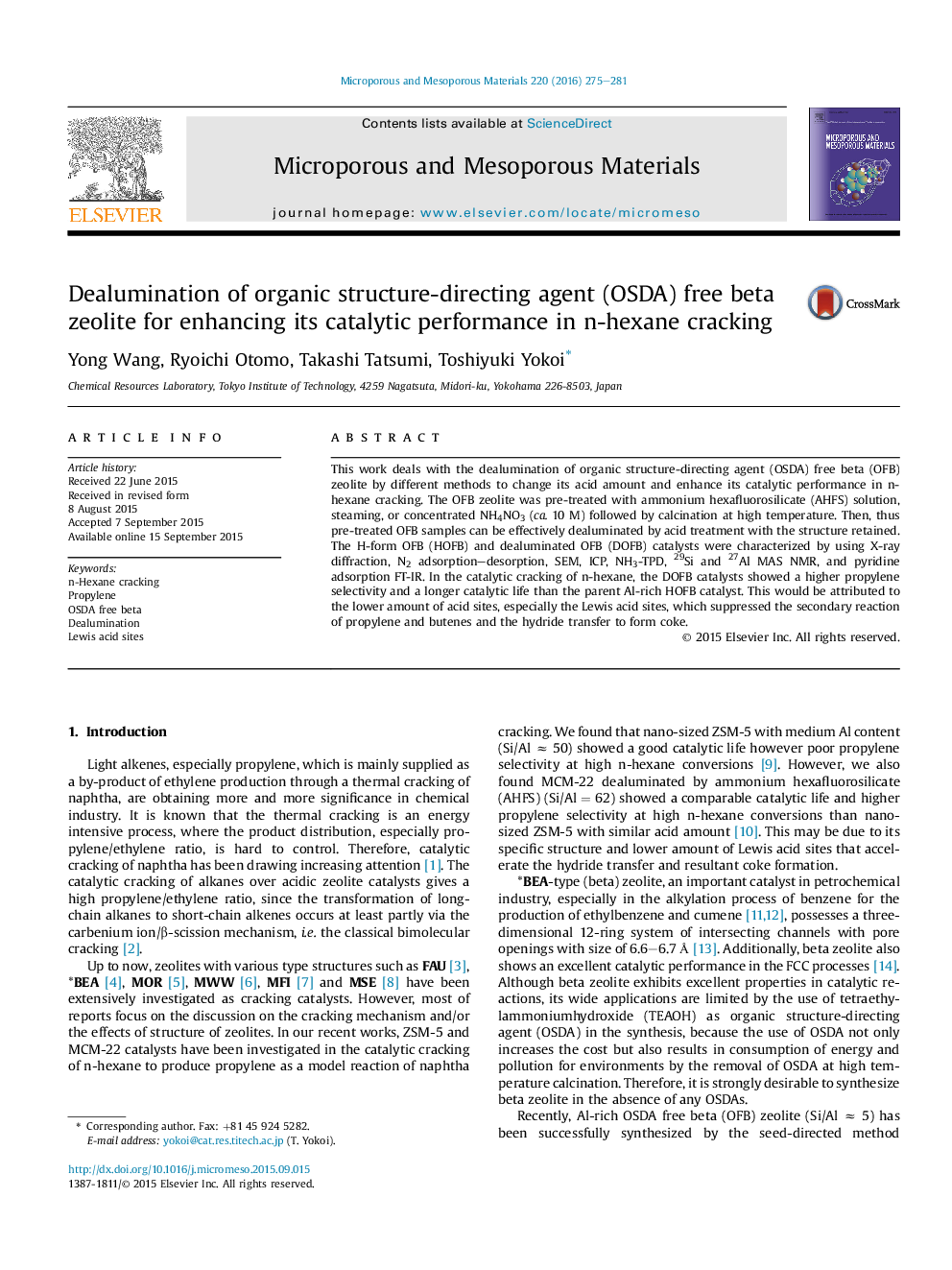| Article ID | Journal | Published Year | Pages | File Type |
|---|---|---|---|---|
| 72261 | Microporous and Mesoporous Materials | 2016 | 7 Pages |
•Al-rich OSDA free beta (OFB) zeolite was dealuminated by different methods.•Dealuminated OFB showed a longer catalytic life and a higher propylene selectivity than the parent OFB in n-hexane cracking.•The ammonium hexafluorosilicate treatment followed by the acid treatment for OFB led to the best catalytic performance.
This work deals with the dealumination of organic structure-directing agent (OSDA) free beta (OFB) zeolite by different methods to change its acid amount and enhance its catalytic performance in n-hexane cracking. The OFB zeolite was pre-treated with ammonium hexafluorosilicate (AHFS) solution, steaming, or concentrated NH4NO3 (ca. 10 M) followed by calcination at high temperature. Then, thus pre-treated OFB samples can be effectively dealuminated by acid treatment with the structure retained. The H-form OFB (HOFB) and dealuminated OFB (DOFB) catalysts were characterized by using X-ray diffraction, N2 adsorption–desorption, SEM, ICP, NH3-TPD, 29Si and 27Al MAS NMR, and pyridine adsorption FT-IR. In the catalytic cracking of n-hexane, the DOFB catalysts showed a higher propylene selectivity and a longer catalytic life than the parent Al-rich HOFB catalyst. This would be attributed to the lower amount of acid sites, especially the Lewis acid sites, which suppressed the secondary reaction of propylene and butenes and the hydride transfer to form coke.
Graphical abstractFigure optionsDownload full-size imageDownload as PowerPoint slide
